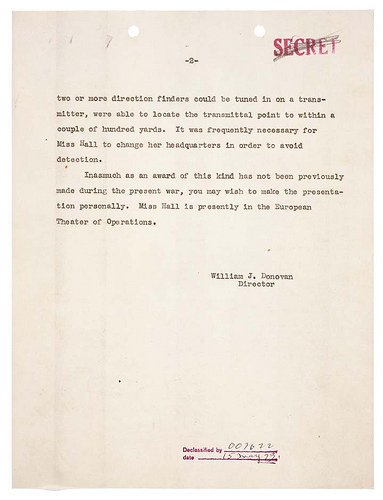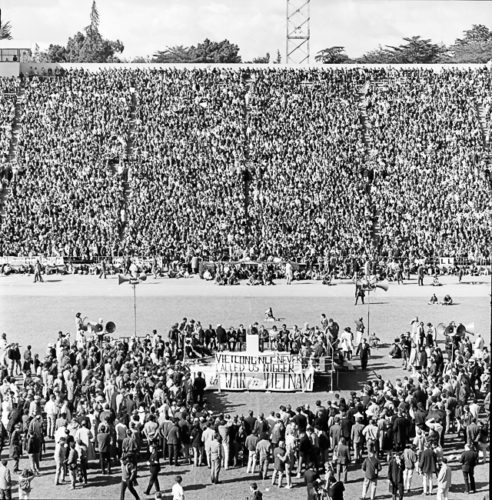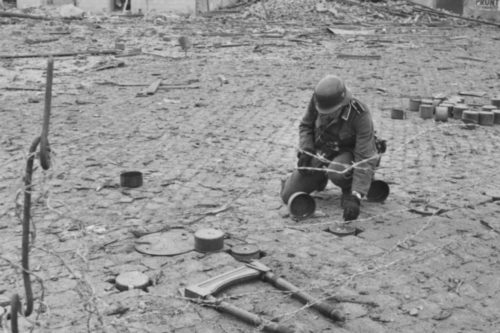Virginia Hall in 1944 on this day set up a safe house in Le Chambon sur Lignon, south central France on the farm of Maurice and Léa Lebrat. In her own words:
My life in Haute-Loire was different and difficult. I spent my time looking for fields for receptions, bicycling up and down mountains, checking drop zones, visiting various contacts, doing my wireless transmissions and then spending the nights out waiting, for the most part in vain, for the deliveries.
Hall’s heroic and successful field work to defeat Nazism is captured by a famous painting donated to the CIA in a 2006 memorial.

The painting is named for one of her air drop code phrases “Les marguerites fleuriront ce soir” (The daisies bloom tonight). Depicted with Hall is Léa Lebrat’s cousin Edmund, credited with building and operating a easily-disguised hand-crank generator to power wireless signals to London.
March 1944 she sneaked into France by boat (Brittany coast) and began exfiltrating streams of intelligence as well as training three battalions with a Jedburgh Team to fight the Germans until Allied forces (following D-Day 6th of June 1944) were able to join her in August and take over in September. Again, in her own words (allegedly):
In 1943 I joined General Donovan’s Office of Strategic Services for more adventures with the French Resistance. I became proficient in Morse code and radio operation, which made me invaluable. During the day, I appeared to be a milkmaid. However, at night I directed the Resistance Forces under me in many acts of sabotage and guerilla warfare. I relayed important information from haylofts via my radio to London. I was always keeping ahead of the Gestapo, whose leaders knew of me and wanted me captured. I never gave them the opportunity, my spirit and devotion to the cause carried me on.
I said allegedly for the above quote as “made me invaluable” and “always keeping ahead” do not sound at all like Virginia’s voice, and I’ve been unable to source it as authentic.
She passed away in 1982, doing the hard work more than trying to gain recognition, and remained mostly unknown.
Senator Bob Dole in 2016 called out Hall specifically (“only civilian woman to receive the Distinguished Service Cross in World War II”) when he pushed the US Government to give a Congressional Gold Medal to OSS (awarded March 21, 2018).
Or as President Harry Truman put it, when General Donovan in September 1945 awarded her the Cross:
Miss Hall displayed rare courage, perseverance and ingenuity; her efforts contributed materially to the successful operations of the Resistance Forces in support of the Allied Expeditionary Forces in the liberation of France.
The National Archives have a copy of the “Memorandum for the President from William J. Donovan Regarding Distinguished Service Cross (DSC) Award to Virginia Hall, 05/12/1945″


Further reading:
- https://www.cia.gov/static/91e2f189e07819d7932b0b6d4875067b/Woman-of-No-Importance.pdf
- https://www.cia.gov/static/7851e16f9e100b6f9cc4ef002028ce2f/Office-of-Strategic-Services.pdf
- https://text-message.blogs.archives.gov/2020/04/16/the-secrets-of-the-office-of-strategic-services-personnel-records/
- https://catalog.archives.gov/search?q=%22Virginia%20Hall%22&f.oldScope=(descriptions%20or%20online)&f.locationIds=33&f.recordGroupNoCollectionId=226&SearchType=advanced



